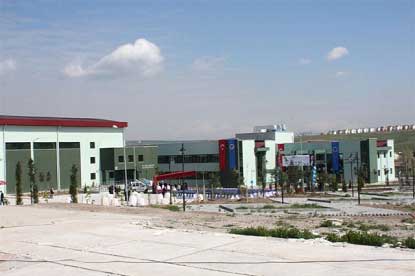The Turkish Accelerator Center Project
Ercan Alp and Ömer Yavaş
In early 1990's, a linac-ring type c-τ-factory together with a synchrotron light source had been proposed as an accelerator based regional project for fundamental and applied physics research in Turkey. The Turkish State Planning Organization (SPO) recognized this proposal and a project to study the feasibility (Phase-I) of the Turkish Accelerator Center (TAC) was approved in 1997. When completed in 2001, this feasibility project was followed by a TAC conceptual design project (Phase-II), again with support from SPO. After the successful outcome of Phase-II in 2005, SPO approved a third project (Phase-III) in 2006 to finalize the TAC technical design report and establish a test laboratory, consisting of a superconducting linac-based Infrared free electron laser facility (IR-FEL). This third phase project is the most widespread project ever supported by SPO involving 10 Turkish Universities under the coordination of the Ankara University with a commensurate budget to be completed by 2015. Our projection is then to have the construction of TAC (Phase-IV) finished by the early 2020's.
In 2009, with the approval and support of the President of Ankara University, an International Scientific Advisory Committee (ISAC), and a Technical Advisory Committee (TAC) were formed. With advice from ISAC, five independent projects are now in the technical design phase. The five accelerator proposals are given below, although there are still a number of options with some of them.- IR-FEL: A superconducting electron linear accelerator with energy of 40 MeV, which will be used to generate coherent infrared radiation in a free electron laser mode (IR-FEL) in the 2-250 micrometer range.
- Proton Accelerator (PA): A proton accelerator complex with a final energy in the range 1-3 GeV, which could serve as a neutron spallation source, a radioactive ion beam facility, as well as a number of lower energy facilities for use in medicine and other sciences.
- Synchrotron Radiation (SR): An electron or positron synchrotron storage ring with energy of at least 3.5 GeV which can be used as a third generation light source in the hard X-ray region using insertion devices.
- SASE-FEL: A 1 GeV electron linear accelerator to generate X-rays via the Self Amplified Spontaneous Emission-Free Electron Laser.
- Particle Factory (PF): A proposed super charm factory based on colliding a 1-GeV electron beam against a 3.5 GeV positron beam.
Parallel to the development of TAC, a new Accelerator Technologies Institute has been approved and started in 2010 within Ankara University. This institute, with a new location at the Gölbaşı campus in Ankara is also hosting the first accelerator, the IR-FEL. The current director of the project is Prof. Ömer Yavaş of Ankara University.
Turkey has an ambitious goal of spending two percent of the yearly GDP for research and development by 2013, to be in compliance with EU guidelines. Projects like TAC are in-line with strengthening the research infrastructure, and it is looking increasingly possible that some of original goals of this mega scientific project will be realized.
Parallel to the TAC project, Turkey is a signatory member of SESAME, the synchrotron project located in Amman, Jordan, together with six other countries in the region. Furthermore, Turkey has a candidate status to be a full member of CERN within the next 4 years, a process approved and started in 2010.

The opening ceremony of the first buildings of the Accelerator Technologies Institute, and the IR-FEL building, May 9, 2011, Gölbaşı, Ankara, Turkey.

Prof. Cemal Taluğ, the Rector of Ankara University, and Dr. Ercan Alp, the chair of the International Science Advisory Committee
Ercan Alp chairs the International Science Advisory Committee of the TAC. Ömer Yavaş is a Professor at Ankara University and is the TAC Project Director.
Disclaimer - The articles and opinion pieces found in this issue of the APS Forum on International Physics Newsletter are not peer refereed and represent solely the views of the authors and not necessarily the views of the APS.
